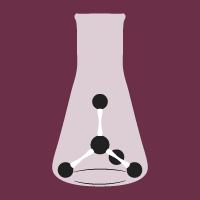Topic Editors


Advances in Inorganic Synthesis
Topic Information
Dear Colleagues,
Recent progress in inorganic chemistry would have been impossible without new and advanced methods of inorganic synthesis. New compounds have been synthesized and crystals grown thanks to the application of new techniques and ideas. Among them are multiagent chemical transport, deep eutectic synthesis, reactions in ionic liquids, nanoscale reactions, cryo-synthesis, and spark plasma sintering, to name a few. With new approaches, new compounds and materials appear, which were impossible to synthesize by using traditional routines. Coupled to new and advanced analytical techniques, advanced inorganic synthesis ensures a fascinating and exciting development of inorganic chemistry into a modern yet traditional branch of science. We invite scientists to contribute research papers, reviews, and communications to the topical collection entitled “Adcances in Inorganic Synthesis”. Contributions on any topic related to inorganic synthesis are welcome.
Prof. Dr. Andrei V. Shevelkov
Prof. Dr. Maxim N. Sokolov
Topic Editors
Keywords
- inorganic synthesis
- crystal growth
- transition metals
- main-group chemistry
- coordination compounds
- inorganic materials
Participating Journals
| Journal Name | Impact Factor | CiteScore | Launched Year | First Decision (median) | APC | |
|---|---|---|---|---|---|---|

Catalysts
|
3.9 | 6.3 | 2011 | 14.3 Days | CHF 2700 | Submit |

Crystals
|
2.7 | 3.6 | 2011 | 10.6 Days | CHF 2600 | Submit |

Inorganics
|
2.9 | 4.0 | 2013 | 12.8 Days | CHF 2700 | Submit |

Materials
|
3.4 | 5.2 | 2008 | 13.9 Days | CHF 2600 | Submit |

Molecules
|
4.6 | 6.7 | 1996 | 14.6 Days | CHF 2700 | Submit |

Solids
|
- | - | 2020 | 17.5 Days | CHF 1000 | Submit |

MDPI Topics is cooperating with Preprints.org and has built a direct connection between MDPI journals and Preprints.org. Authors are encouraged to enjoy the benefits by posting a preprint at Preprints.org prior to publication:
- Immediately share your ideas ahead of publication and establish your research priority;
- Protect your idea from being stolen with this time-stamped preprint article;
- Enhance the exposure and impact of your research;
- Receive feedback from your peers in advance;
- Have it indexed in Web of Science (Preprint Citation Index), Google Scholar, Crossref, SHARE, PrePubMed, Scilit and Europe PMC.

